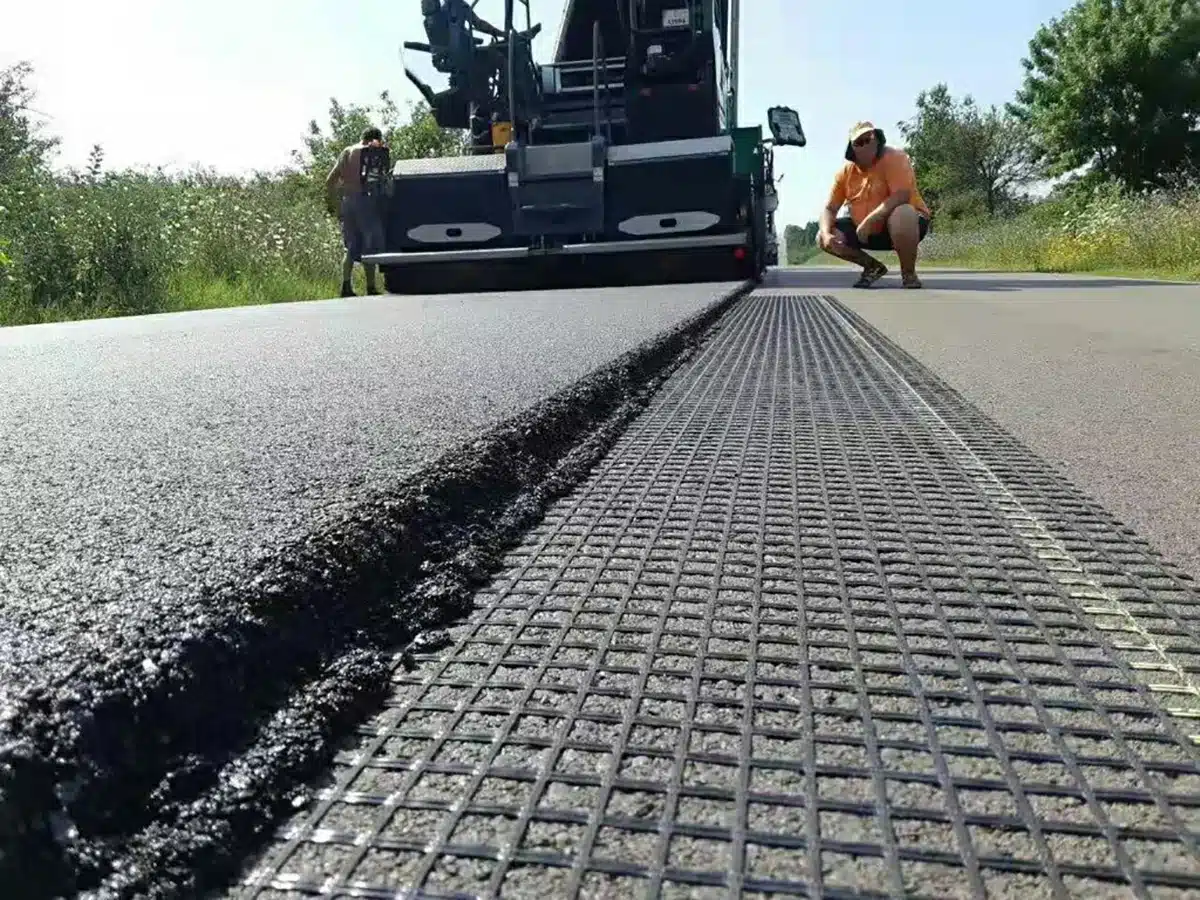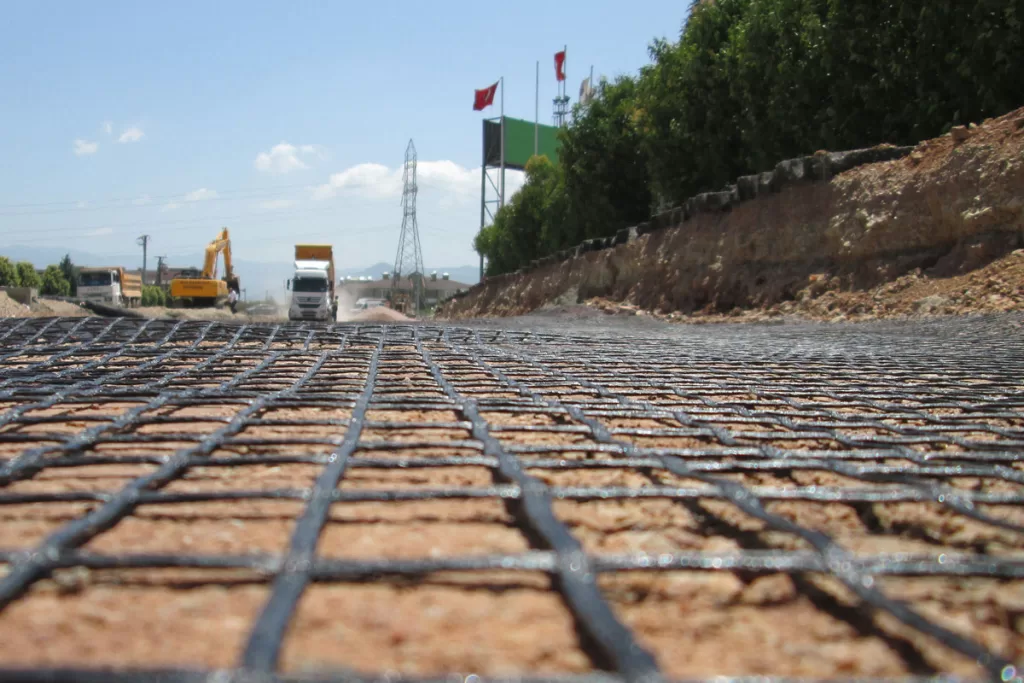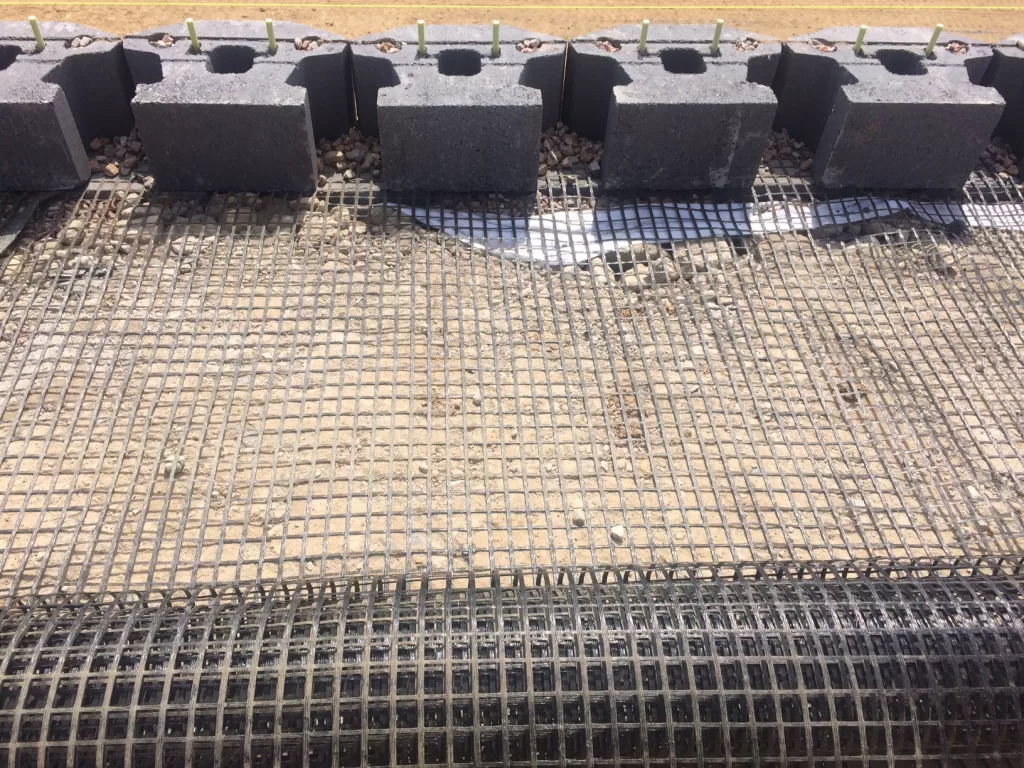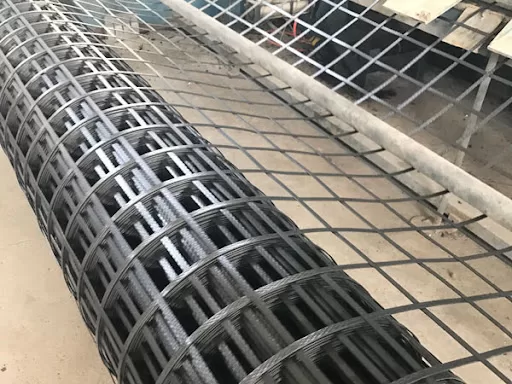+86-159 9860 6917
info@geofantex.com
geofantex@gmail.com
+86-400-8266163-44899
Retaining walls are essential structures that hold back soil in various landscaping, construction, and engineering projects, preventing erosion and providing stability to sloped terrains. One key element that plays a pivotal role in the effectiveness and durability of these walls is the use of geogrids. Geogrids are synthetic materials used to reinforce soil, enhancing the structural integrity of retaining walls. This article delves into the critical aspect of geogrid width requirements, shedding light on how proper sizing can significantly affect the performance and longevity of retaining walls.

What are Geogrids and Why are They Important for Retaining Walls?
Geogrids are a type of geosynthetic material used in civil engineering applications, particularly in the construction of retaining walls. They are composed of polymers such as polyethylene, polypropylene, or polyester, and are formed into a grid-like structure.
Geogrids serve several important functions in retaining walls:
- Reinforcement: One of the primary functions of geogrids is to provide reinforcement to the soil or backfill material behind the retaining wall. By placing geogrid layers within the backfill, it helps distribute the loads imposed on the wall and enhances the stability of the structure.
- Soil stabilization: Geogrids prevent soil erosion and displacement by confining the soil particles within their grid apertures. This stabilization helps maintain the integrity of the soil mass behind the wall, reducing the risk of settlement or slope failure.
- Improvement of bearing capacity: By distributing the applied loads more evenly across a wider area of soil, geogrids can improve the bearing capacity of the soil, allowing for the construction of taller or more structurally demanding retaining walls.
- Reduction of wall thickness: The use of geogrids can sometimes allow for the reduction of the thickness of the retaining wall, resulting in cost savings and more efficient use of materials.
- Durability and longevity: Geogrids are typically made from durable synthetic materials that are resistant to degradation from environmental factors such as moisture, chemicals, and UV exposure. This enhances the longevity and performance of the retaining wall over time.
Overall, geogrids play a crucial role in enhancing the stability, strength, and durability of retaining walls, making them an integral component in the design and construction of such structures.
How Does the Width of a Geogrid Affect Retaining Wall Stability?
The width of a geogrid can significantly affect the stability of a retaining wall. Geogrids are commonly used in retaining walls to provide reinforcement and improve stability by distributing lateral earth pressures more evenly. The width of the geogrid refers to its horizontal extent within the soil mass.
Here’s how the width of a geogrid can impact retaining wall stability:
- Improving Soil Reinforcement: A wider geogrid typically provides more reinforcement to the soil behind the retaining wall. This reinforcement helps to resist the lateral pressure exerted by the retained soil, thereby enhancing the overall stability of the wall.
- Increased Soil Interaction: A wider geogrid allows for greater interaction with the soil mass. This increased interaction enhances the transfer of forces between the geogrid and the soil, resulting in better confinement and compaction of the soil, which can improve stability.
- Reduction of Differential Settlement: By extending further into the soil, a wider geogrid can help reduce the potential for differential settlement behind the retaining wall. This is particularly important in situations where the retained soil consists of varying soil types or where there are differential loads acting on the wall.
- Control of Wall Deflection: A wider geogrid can help control wall deflection by providing additional support to the soil mass. This can prevent excessive deformation of the wall, which is crucial for maintaining its stability and structural integrity over time.
- Enhanced Resistance to External Factors: In regions prone to seismic activity or areas with high groundwater levels, a wider geogrid can enhance the retaining wall’s resistance to external factors such as lateral earth pressure variations or hydrostatic forces.
However, it’s important to note that the design of a retaining wall involves considering various factors such as soil properties, wall height, loading conditions, and construction techniques. The width of the geogrid should be determined based on a thorough engineering analysis and in accordance with applicable design codes and standards to ensure optimal stability and performance of the retaining wall structure.

What are the Standard Width Requirements for Geogrids in Retaining Wall Construction?
The standard width requirements for geogrids in retaining wall construction depend on several factors, including the type of geogrid used, the design of the retaining wall, and the specific application. Here is a structured overview:
General Guidelines:
- Geogrid Types: There are two main types of geogrids used in retaining walls: uniaxial and biaxial. Uniaxial geogrids are used primarily for reinforcement in one direction, while biaxial geogrids provide reinforcement in two perpendicular directions.
- Width Standards: Standard geogrid rolls typically come in widths ranging from 1 to 6 meters (approximately 3 to 20 feet). The specific width required will depend on the design and requirements of the retaining wall project.
Design Considerations:
- Wall Height: The height of the retaining wall influences the required length and width of the geogrid layers. Taller walls typically require wider and longer geogrid layers for adequate reinforcement.
- Soil Type: The type of soil being retained can impact geogrid selection. Cohesive soils may require different geogrid properties compared to granular soils.
- Load Conditions: The expected loads on the retaining wall, including surcharge loads, will affect the geogrid width and spacing.
Installation Guidelines:
- Layering: Geogrids are typically installed in layers, with each layer extending from the face of the wall back into the retained soil. The width of each layer should be sufficient to provide the necessary reinforcement based on the design specifications.
- Overlap: In some cases, geogrid layers may need to overlap to ensure continuous reinforcement. The amount of overlap required will depend on the geogrid type and manufacturer recommendations.
Manufacturer Specifications:
- Product Data Sheets: Always refer to the manufacturer’s product data sheets for specific geogrid width requirements and installation guidelines. These documents provide detailed information on the geogrid’s properties and recommended use.
Regulatory Standards:
- Local Codes: Ensure compliance with local building codes and standards, which may specify minimum requirements for geogrid widths and installation practices in retaining wall construction.
By following these guidelines and consulting with geotechnical engineers and manufacturers, you can ensure that the geogrids used in your retaining wall construction meet the necessary standards for safety and effectiveness.
The width of geogrids plays a critical role in the stability and durability of retaining walls. By understanding the importance of proper geogrid sizing and adhering to recommended width requirements, constructors and engineers can ensure that retaining walls are built to last, providing effective soil reinforcement and stability. It is always recommended to involve geotechnical experts in the planning stage to tailor the geogrid specifications to the specific needs of each project, ensuring optimal performance and longevity of retaining walls.



Get Free Sample
We’ll respond as soon as possible(within 12 hours)






















